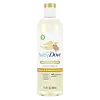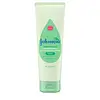What's inside
What's inside
 Key Ingredients
Key Ingredients

No key ingredients
 Benefits
Benefits

 Concerns
Concerns

 Ingredients Side-by-side
Ingredients Side-by-side

Water
Skin ConditioningGlycerin
HumectantCetyl Alcohol
EmollientCocoglycerides
EmollientGlycine Soja Oil
EmollientAloe Barbadensis Leaf Extract
EmollientTocopheryl Acetate
AntioxidantButyrospermum Parkii Butter
Skin ConditioningTheobroma Cacao Seed Butter
EmollientDimethicone
EmollientParaffinum Liquidum
EmollientZea Mays Starch
AbsorbentCarbomer
Emulsion StabilisingHydrogenated Palm Glycerides
EmollientPotassium Cetyl Phosphate
EmulsifyingHydrogenated Cottonseed Oil
EmollientGlyceryl Oleate
EmollientSodium Hydroxide
BufferingP-Anisic Acid
MaskingDisodium EDTA
Ethylhexylglycerin
Skin ConditioningPhenoxyethanol
PreservativeParfum
MaskingMica
Cosmetic ColorantTitanium Dioxide
Cosmetic ColorantWater, Glycerin, Cetyl Alcohol, Cocoglycerides, Glycine Soja Oil, Aloe Barbadensis Leaf Extract, Tocopheryl Acetate, Butyrospermum Parkii Butter, Theobroma Cacao Seed Butter, Dimethicone, Paraffinum Liquidum, Zea Mays Starch, Carbomer, Hydrogenated Palm Glycerides, Potassium Cetyl Phosphate, Hydrogenated Cottonseed Oil, Glyceryl Oleate, Sodium Hydroxide, P-Anisic Acid, Disodium EDTA, Ethylhexylglycerin, Phenoxyethanol, Parfum, Mica, Titanium Dioxide
Ingredients Explained
These ingredients are found in both products.
Ingredients higher up in an ingredient list are typically present in a larger amount.
Parfum is a catch-all term for an ingredient or more that is used to give a scent to products.
Also called "fragrance", this ingredient can be a blend of hundreds of chemicals or plant oils. This means every product with "fragrance" or "parfum" in the ingredients list is a different mixture.
For instance, Habanolide is a proprietary trade name for a specific aroma chemical. When used as a fragrance ingredient in cosmetics, most aroma chemicals fall under the broad labeling category of “FRAGRANCE” or “PARFUM” according to EU and US regulations.
The term 'parfum' or 'fragrance' is not regulated in many countries. In many cases, it is up to the brand to define this term.
For instance, many brands choose to label themselves as "fragrance-free" because they are not using synthetic fragrances. However, their products may still contain ingredients such as essential oils that are considered a fragrance by INCI standards.
One example is Calendula flower extract. Calendula is an essential oil that still imparts a scent or 'fragrance'.
Depending on the blend, the ingredients in the mixture can cause allergies and sensitivities on the skin. Some ingredients that are known EU allergens include linalool and citronellol.
Parfum can also be used to mask or cover an unpleasant scent.
The bottom line is: not all fragrances/parfum/ingredients are created equally. If you are worried about fragrances, we recommend taking a closer look at an ingredient. And of course, we always recommend speaking with a professional.
Learn more about Parfum